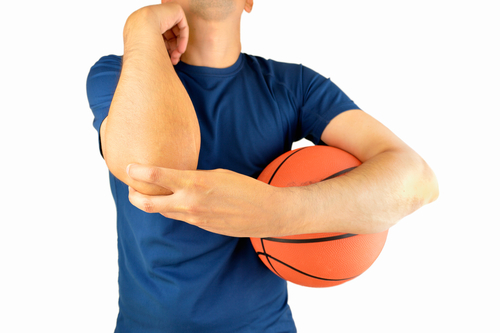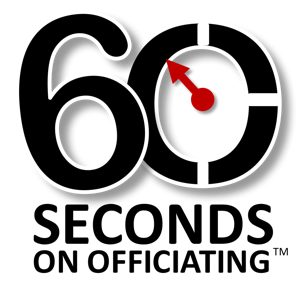
Elbow Contact Above the Shoulders
A major point of emphasis in scholastic play.
In a scholastic contest, B1 grabs the rebound from A1’s try for goal. After gaining control of the rebound she pivots and swings her elbows high (but not excessively) and accidentally makes contact with A2 on the back of her head. The contact resulted in A2 falling to the floor.
What is your ruling in this high school contest?
To help clean up these types of plays in 2012 the NFHS issued a “Point of Emphasis” (POE) on “Contact Above the Shoulders.” It focused on illegal contact from a moving elbow where such contact was above the shoulders.
The NFHS emphasized this contact would result in either an INTENTIONAL foul or FLAGRANT foul – based on specific criteria.
The ultimate goal was to reduce the frequency of concussions and decrease excessive contact situations. It also helped to align with the efforts of the NCAA (and even NBA) to reign in these types of illegal contact situations.
Move forward to 2013-14 where NFHS further clarified in a POE the two varieties of this contact.
- Rule an INTENTIONAL Foul when contact above the shoulders is NOT the result of EXCESSIVELY SWINGING the ELBOWS – but in past seasons might have been ruled a common player control foul.
- Rule a FLAGRANT Foul when contact above the shoulders is the result of EXCESSIVELY SWINGING the ELBOWS.
Remember, in scholastic contests, when a player “excessively swings” their elbows, at a minimum, a violation should be ruled even if NO CONTACT is made. If the contact is the result of excessive swinging prior to the official stopping play (for a violation) then a flagrant foul may be ruled – unless the contact is judged to be “slight of nature.”
In previous years officials would have been correct in ruling a player control foul for penalizing rebounders for contacting defenders with their elbows, when pivoting to release an outlet pass. This should be at a minimum be ruled intentional – with the possibility of being flagrant, based on the “excessive nature” of the swinging.
Ask your partner(s) for help with these types of plays.
When these plays occur – blow the whistle immediately with your stop clock signal. Either violation (open hand) for excessive swinging with no contact – or foul (closed fist) and intentional (crossed arms above head with fists closed) to indicate an intentional foul.
By bringing in the crew to discuss this situation before reporting to the table you can share what each person saw — and rule on whether the movement was “excessive” or not. If excessive swinging causing contact was judged then a flagrant foul is in order. Remember, in NFHS play the offender is disqualified for the remainder of the game.
When judging … action of the arms / elbows during total body movement (such as pivoting, faking a pass, releasing a pass) is not to be considered excessive. Neither is moving the ball to prevent the defender from causing a held ball situation.
In contrast for NCAA officials illegal contact caused by the swinging of the elbow(s) that occurs above or below the shoulders of an opponent is a common, Flagrant 1 or Flagrant 2 personal foul. Such contact no longer requires a minimum of a flagrant 1 personal foul when it occurs above the shoulders of an opponent.
So be ready for these plays as they develop. Be quick with the whistle when elbows are flying – whether or not contact if occurring. If it does you will be ready to rule properly.
Rule References
NFHS 9-13, 4-19-3 and 4 NCAA 10-1.14.c

What happens if the whistle was blown to stop the clock and the player continues to swing the elbows contacting the opponent’s head and knocking her to the floor?
Flagrant technical should be called.
I believe the was a typo in the above article. B1 elbowed B2 (teammates). No-matter it is a good article. Thank you for this site I enjoy this site and the work you guys do. My friend and I were talking about this exact play a couple weeks ago.